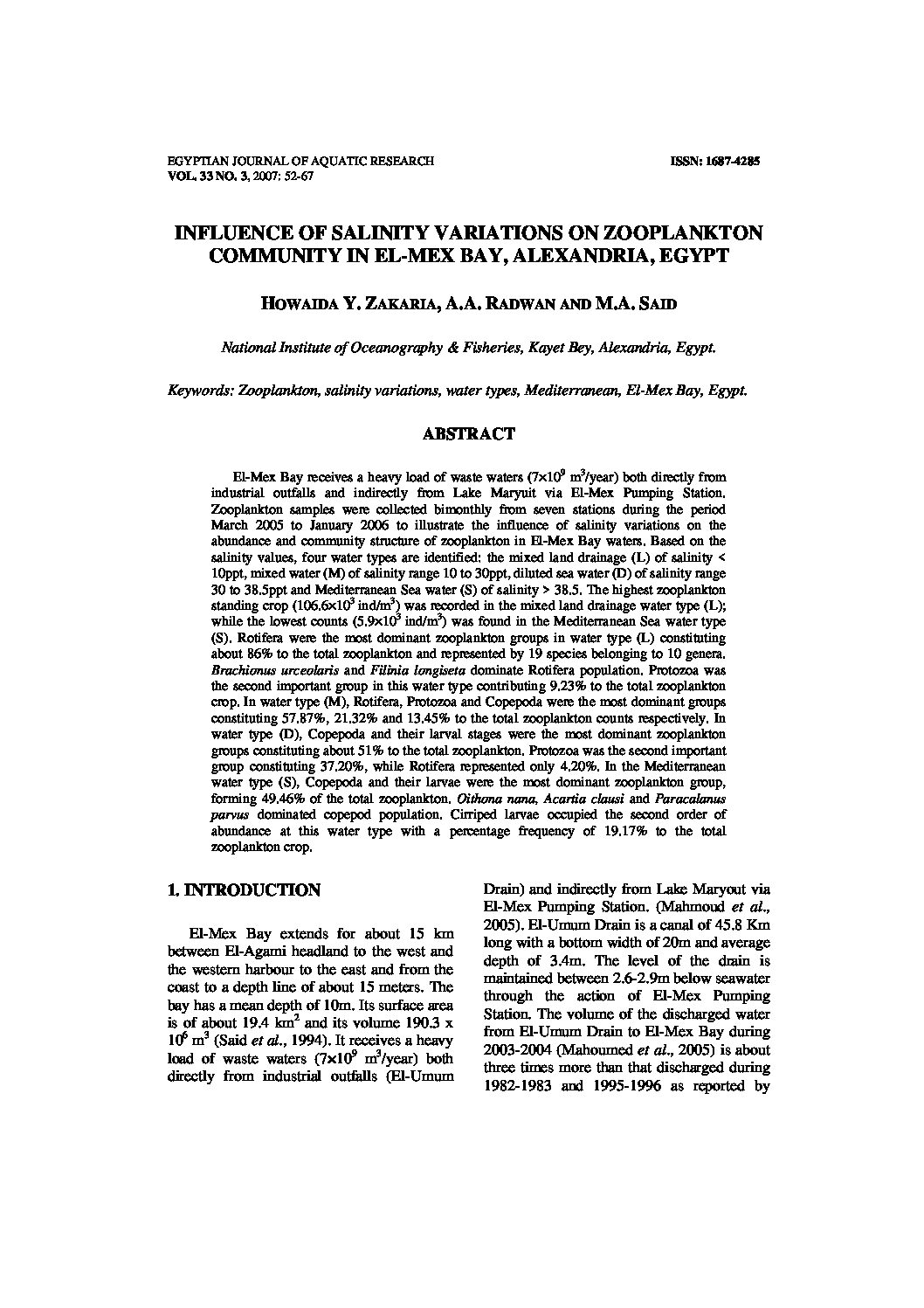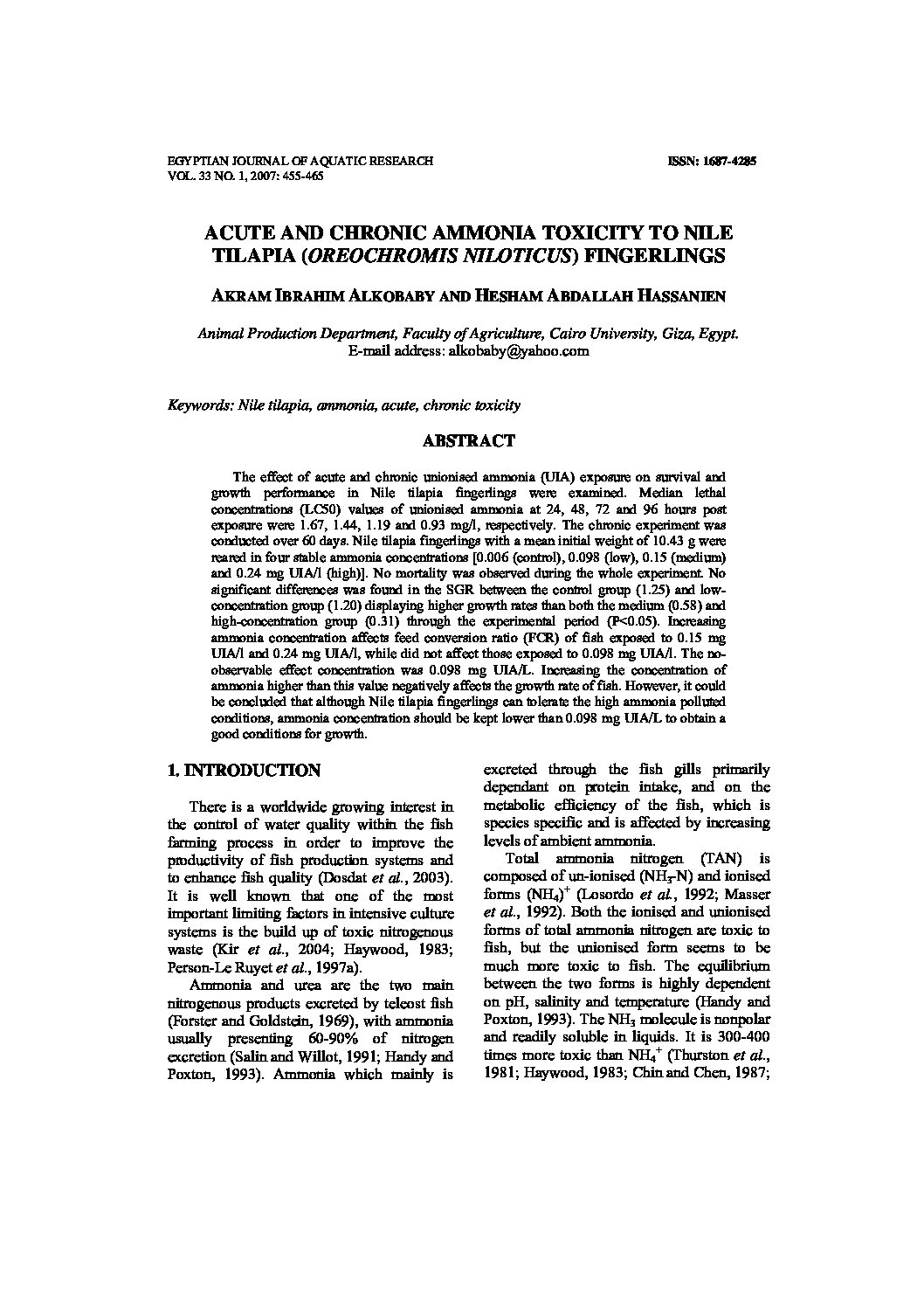Categories
vol-33INFLUENCE OF SALINITY VARIATIONS ON ZOOPLANKTON
COMMUNITY IN EL-MEX BAY, ALEXANDRIA, EGYPT
HOWAIDA Y. ZAKARIA, A.A. RADWAN AND M.A. SAID
National Institute of Oceanography & Fisheries, Kayet Bey, Alexandria, Egypt.
Keywords: Zooplankton, salinity variations, water types, Mediterranean, El-Mex Bay, Egypt.
ABSTRACT
El-Mex Bay receives a heavy load of waste waters (7×109
m3
/year) both directly from
industrial outfalls and indirectly from Lake Maryuit via El-Mex Pumping Station.
Zooplankton samples were collected bimonthly from seven stations during the period
March 2005 to January 2006 to illustrate the influence of salinity variations on the
abundance and community structure of zooplankton in El-Mex Bay waters. Based on the
salinity values, four water types are identified: the mixed land drainage (L) of salinity <
10ppt, mixed water (M) of salinity range 10 to 30ppt, diluted sea water (D) of salinity range
30 to 38.5ppt and Mediterranean Sea water (S) of salinity > 38.5. The highest zooplankton
standing crop (106.6×103 ind/m3
) was recorded in the mixed land drainage water type (L);
while the lowest counts (5.9×103 ind/m3
) was found in the Mediterranean Sea water type
(S). Rotifera were the most dominant zooplankton groups in water type (L) constituting
about 86% to the total zooplankton and represented by 19 species belonging to 10 genera.
Brachionus urceolaris and Filinia longiseta dominate Rotifera population. Protozoa was
the second important group in this water type contributing 9.23% to the total zooplankton
crop. In water type (M), Rotifera, Protozoa and Copepoda were the most dominant groups
constituting 57.87%, 21.32% and 13.45% to the total zooplankton counts respectively. In
water type (D), Copepoda and their larval stages were the most dominant zooplankton
groups constituting about 51% to the total zooplankton. Protozoa was the second important
group constituting 37.20%, while Rotifera represented only 4.20%. In the Mediterranean
water type (S), Copepoda and their larvae were the most dominant zooplankton group,
forming 49.46% of the total zooplankton. Oithona nana, Acartia clausi and Paracalanus
parvus dominated copepod population. Cirriped larvae occupied the second order of
abundance at this water type with a percentage frequency of 19.17% to the total
zooplankton crop.







